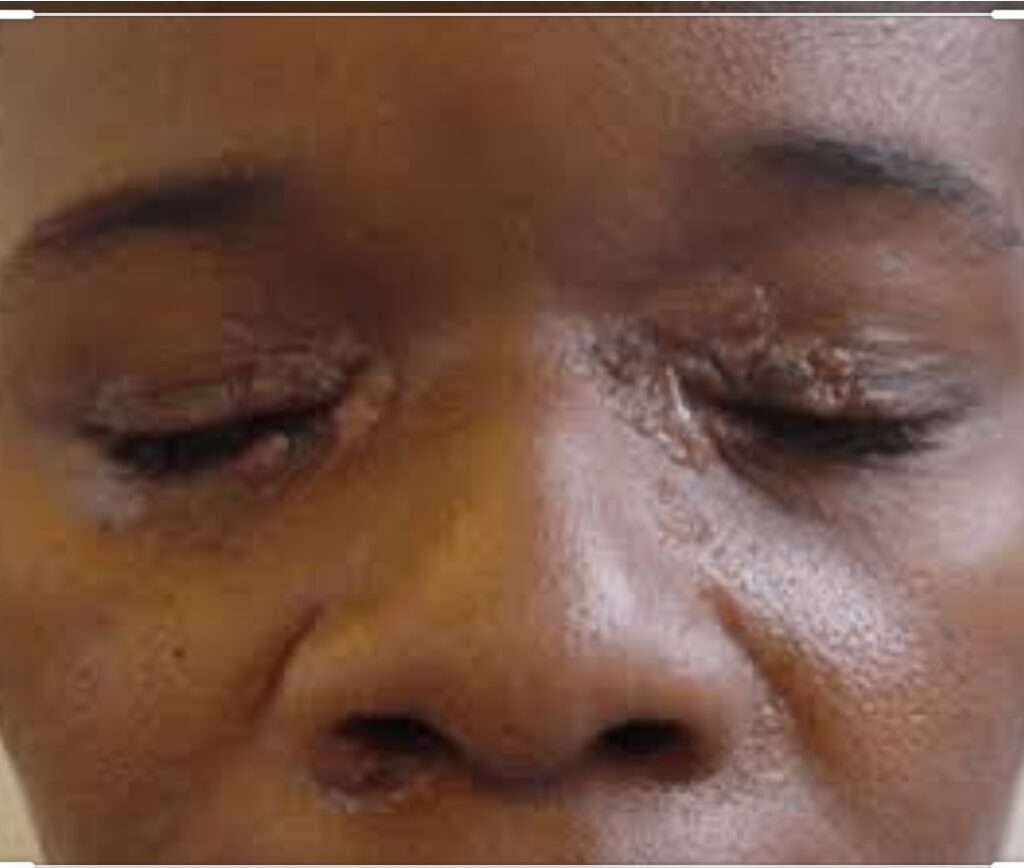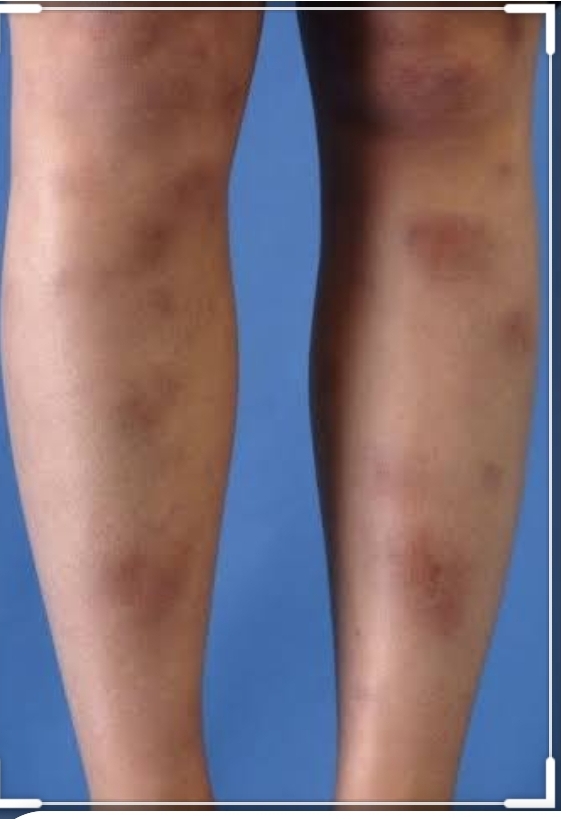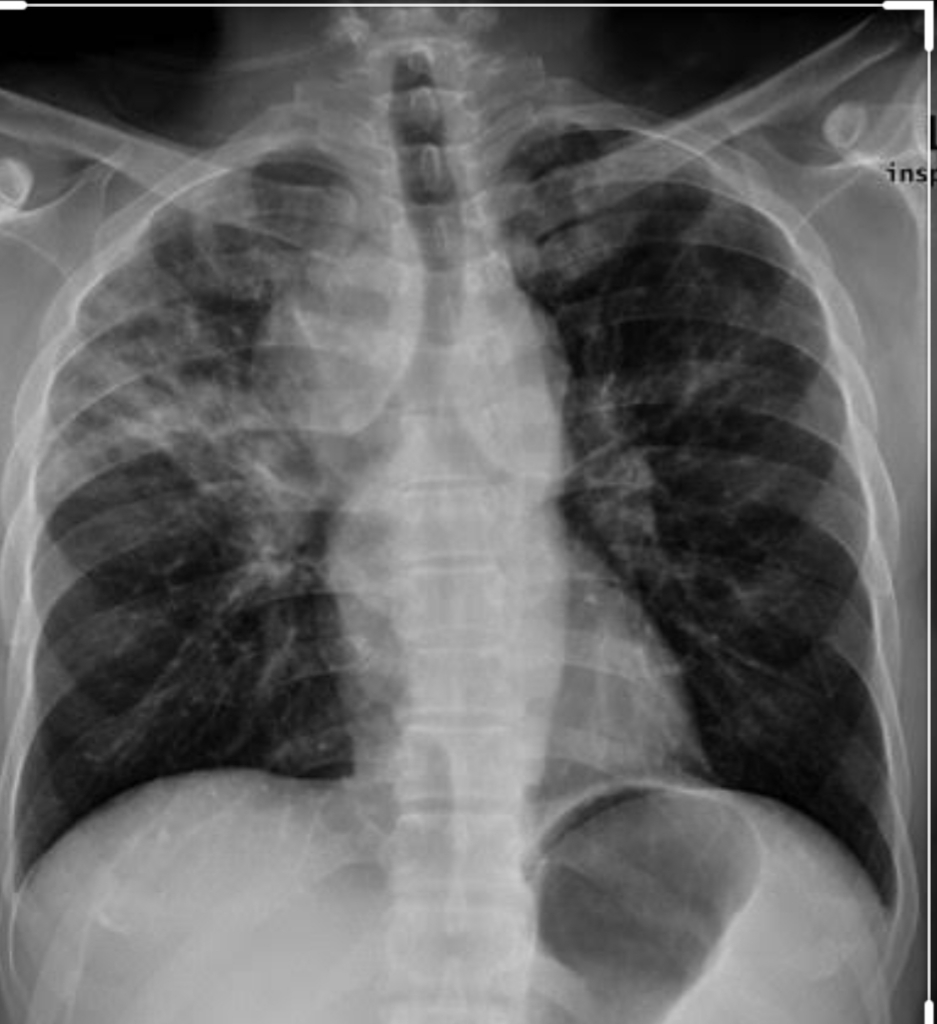Sarcoidosis is a chronic multi systemic granulomatous disease of unknown aetiology (cause). Because it is not common and presents with respiratory symptoms especially cough, it may often be misdiagnosed as Tuberculosis (Kochs disease) in our environment.
As with most diseases in medicine that the cause is unknown, genetics and environmental factors play important roles in its aetiology. T cells and B cells play important roles in its pathophysiology especially the former. Cytokines such as IL 1 and TNF alpha are upregulated in the disease. I jokingly tell my students that any condition with the aetiology unknown will usually have an interplay of genetic and environmental factors with subsequent release of cytokines. I also tell them that even if I do not know much about a condition…as long as the aetiology is uncertain, it will definitely be an interplay between genetic and environmental factors. With that….you can almost write about the pathophysiology of most of these conditions. It is more common in African-Americans and blacks and they often have more severe disease.

Image from Dherbs via Google images
What are the ways sarcoidosis can present?
1. Asymptomatic….in 5% of cases
2. Non specific systemic symptoms – in 45% of cases. Like malaise, joint pains, fever.
3. Pulmonary symptoms – In a little more than 50% of cases such as cough, chest pain, difficulty breathing (called dyspnoea) especially on exertion and occasionally hemoptysis.
4. Skin manifestations which may be in form of –
a. Erythema nodosum – which is a form of inflammation of the subcutaneous tissue appearing as reddish or purple/dark colored pigmented induration usually on the lower limbs.
b. Lupus pernio – a raised purplish or reddish (usually appears dark in blacks) induration of the areas around the nose, cheeks, lips, ears and foreheads. It is the only PATHOGNOMONIC skin lesion of sarcoidosis.
c. Indurated plaques on the skin which may also occur in old scars (scar sarcoid).

Image from American family Physician via Google images

Image from primary care dermatological society
5. Ocular – anterior and posterior uveitis, conjunctivitis amongst others. May lead to blindness.
6. Heart – Arrhythmias, heart failure.
7. Neurological – Cranial nerve palsies, aseptic meningitis amongst others.
8. Hypercalcemia with its symptoms such as kidney stones.
You can see that it can affect almost any system. It may be easier to diagnose if it involves the skin…that is if it gets to someone that can recognize it. If not.. a lot of patients spend months or even years before a diagnosis is made.
How is it diagnosed?
Chest Xray is central to diagnosis and depending on the stage…may be normal or show bilateral hilar adenopathy, pulmonary infiltrates or even fibrosis. Note that there are 4 stages of lung involvement.

Image from Radiopedia via Google images
High resolution CT.
Pulmonary function tests.
Serum ACE level is only 60% sensitive and 70% specific for sarcoidosis.
The most important way to do a definitive diagnosis is a biopsy of affected organ that can be biopsied. Please don’t mention eye biopsy 😊
Transbronchial biopsy, skin biopsy for histology can be done. Usually shows non-caseating granulomas (they’re usually naked granulomas). Stains must be done for mycobacterium (TB) and fungi as these are causes of other granulomatous skin conditions that may be confused with sarcoidosis. These stains are negative in sarcoidosis.
How do you treat? Depends on the stage.
Steroids, immunosuppressive, biologics. Lung transplantation may be necessary in advanced lung disease.
So….I hope you have learnt a thing or two about sarcoidosis. Can you give me two differentials for the skin lesions? I gave a clue in the writeup.
Remember……not all that coughs is Kochs😊.
If you’re not a medic and you read this, I’m sure you’re having tension type headache already. Not to worry….that slight cough you’re having is not likely sarcoidosis. Its not as common as that. So worry not.
For the medics, I hope I have piqued your interest enough to make you go and read more about sarcoidosis. A whole lot still left to learn. This is just a tip of the iceberg.
Any comments, questions or clarifications?

Definitely taking Lupus pernio away from this. I could have placed a bet it was Koch’s. Quite jarring to know that really, not all that coughs is Koch’s. Thank you!
Yes…that was the teaching point for me. I had a patient when I was a resident. That was managed for Kochs for close to 6 months already(from outside) before coming to the teaching hospital. Imagine having to take Antikochs when you’re not even infected with TB! They’re close differentials. And they’re both great mimics of other systemic diseases. Thanks for stopping by Tolu.
Thanks for this write up chief. Learnt a lot. Never knew Sarcoidosis has a pathognomonic feature as I was looking for Lofgren’s syndrome.
Some of your write ups helped me in few questions in my March exam. More inspiration boss.
This made me so happy to read. I didn’t want to go too much into all the syndromes in Sarcoidosis. Sure you also know about Heerfordt’s syndrome too in sarcoidosis. Glad to know you’ve found my teaching useful. Do stop by again….
Lupus pernio is my take home here. Always viewed sarcoidosis as an Alice in wonderland diagnosis. Thank you so much ma for your continuous enlightenment. God bless you.
I’m glad you learnt one or two things from the post. And God bless you too. Do stop by again.
Wonderful info
Thank you so much. Do stop by again soon
Thank you very much for this ma.
I really learned a lot from it
You’re welcome! Do stop by again soon! Thank you
If you would like to take a great deal from this paragraph then you have to
apply such strategies to your won webpage.
Thank you so much for reading and stopping by. Do stop by again soon. And I’ll keep writing!